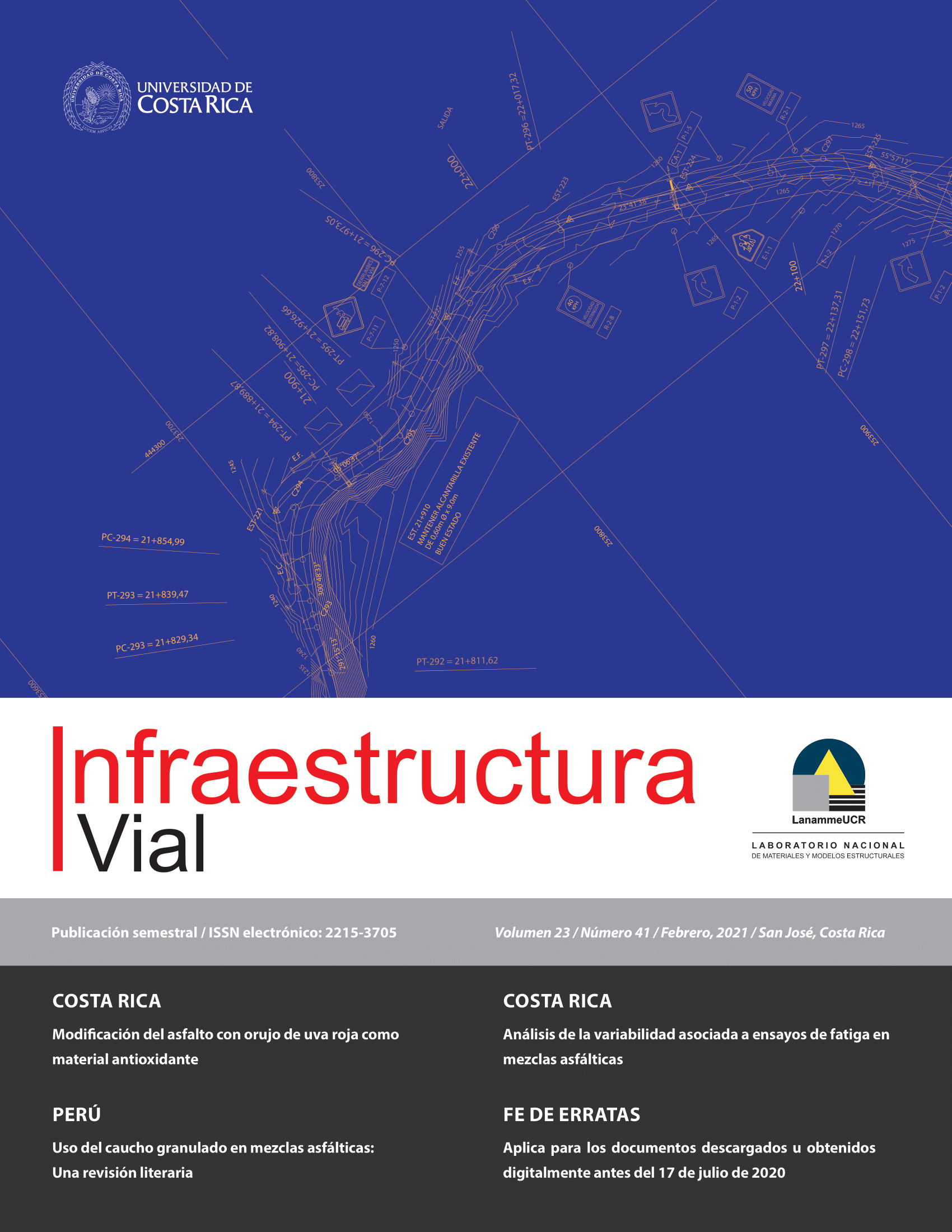Abstract
This research paper synthesizes the analysis of the variability associated with fatigue tests on three types of hot asphalt mixtures and produced in plants in Costa Rica. The tests studied were: overlay (Tex-248-F), semi-circular curve test (SCB, ASTM D8044-16) and the beam test subjected to 4 point bending
(AASHTO T321-17). These tests present a lot of variability in the results, which causes the analysis of the results could be questioned. It should be considered that the fatigue analysis in asphalt mixtures for highways in Costa Rica is regulated by the General Specifications Manual for the Construction of Highways, Roads and Bridges of Costa Rica (CR-2010) of the Ministry of Public Works and Transport (MOPT, by its acronym in Spanish), and that it is based on the Superpave
methodology and the AASHTO T 321 test. Therefore, the work was developed to generate inputs to evaluate different tests and their applicability in the design and construction processes of Costa Rica highways. This could allow redefining national specifications on this topic, in the future. The study required a collection of bibliographic information, an experimental phase, which included the characterization of the materials and specimens, and fatigue tests. Then, the analysis of the variability of the results was carried out, looking forward to sensitivity factors, trends in the behavior of mixtures, as well as advantages and disadvantages of the methods. It was verified that the variability depends on different factors to a greater extent on the properties of the mixture. Finally, it was identified that the most variable test was the four-point bending-traction beam test and the semi-circular test required the least time and effort compared to the other tests.
References
Domínguez, J. (22 de enero 2018). La fatiga de los materiales y su tolerancia al daño. El Mundo. Recuperado de https://www.elmundo.es/economia/2018/01/16/5a5de0e4e5fdeaad3c8b45e5.html
Loría, G., y Arce, M. (2003). Análisis de fatiga en mezclas asfálticas (LM-PI-PV-IN-XX-02). Recuperado de https://www.lanamme.ucr.ac.cr/repositorio/handle/50625112500/1200
Parker, B. (2010). Laboratory evaluation of hot-mix asphalt concrete fatigue cracking resistance. Tesis de maestría, Texas A&M University.
Rondón, H., Reyes, F., Gonzáles, L., y Vásquez, S. (2012). Ahuellamiento y fatiga en mezclas asfálticas. Bogotá, Colombia: Ecoediciones
Walubita, L., Faruk, A., Das, G., Tanvi, H., Zhang, J., y Scullion, T. (2012). The Overlay Tester: A Sensitivity Study To Improve Repeatability And Minimize Variability In The Test Results (FHWA/TX-12/0-6607-1). Recuperado de https://static.tti.tamu.edu/tti.tamu.edu/documents/0-6607-1.pdf


